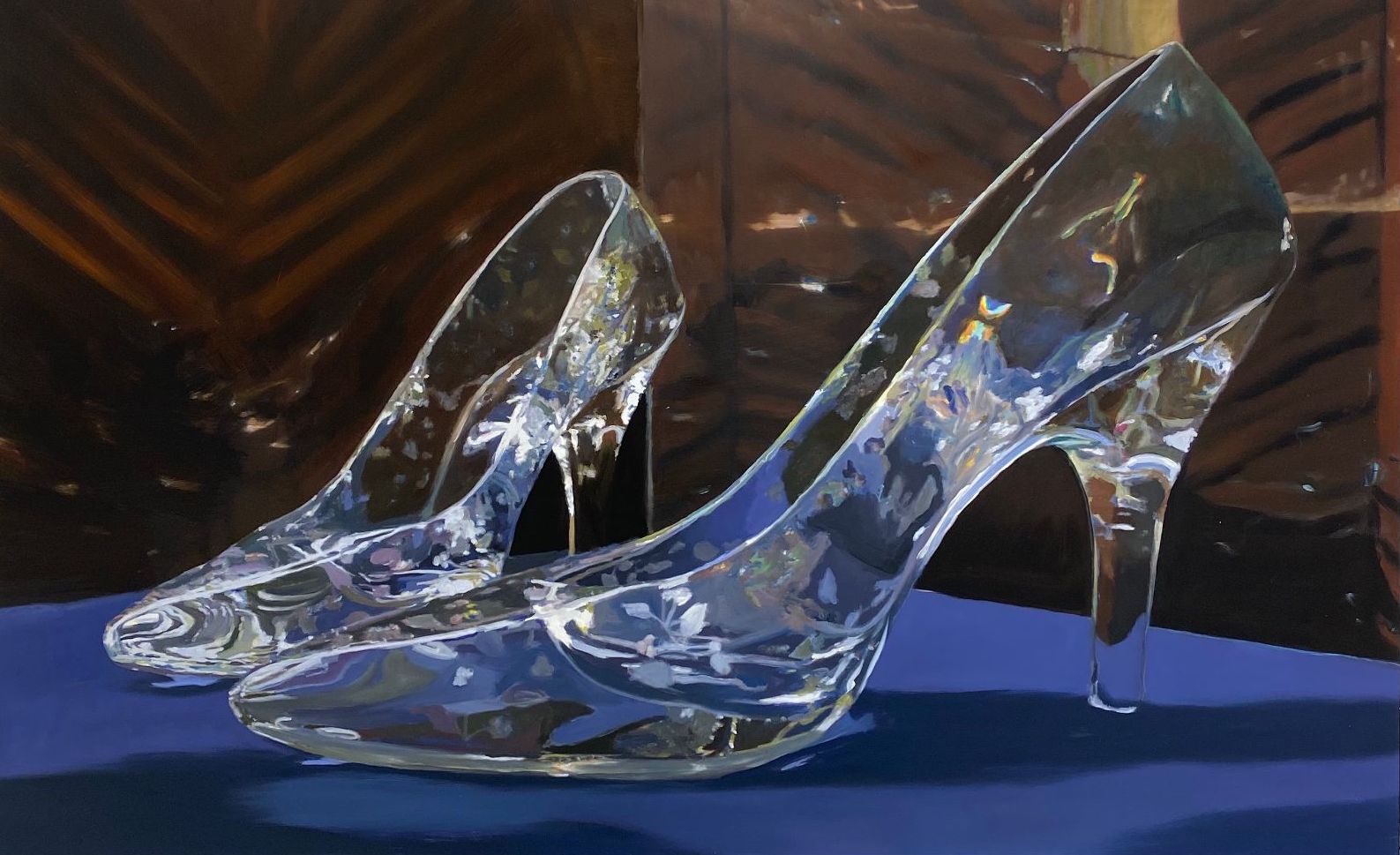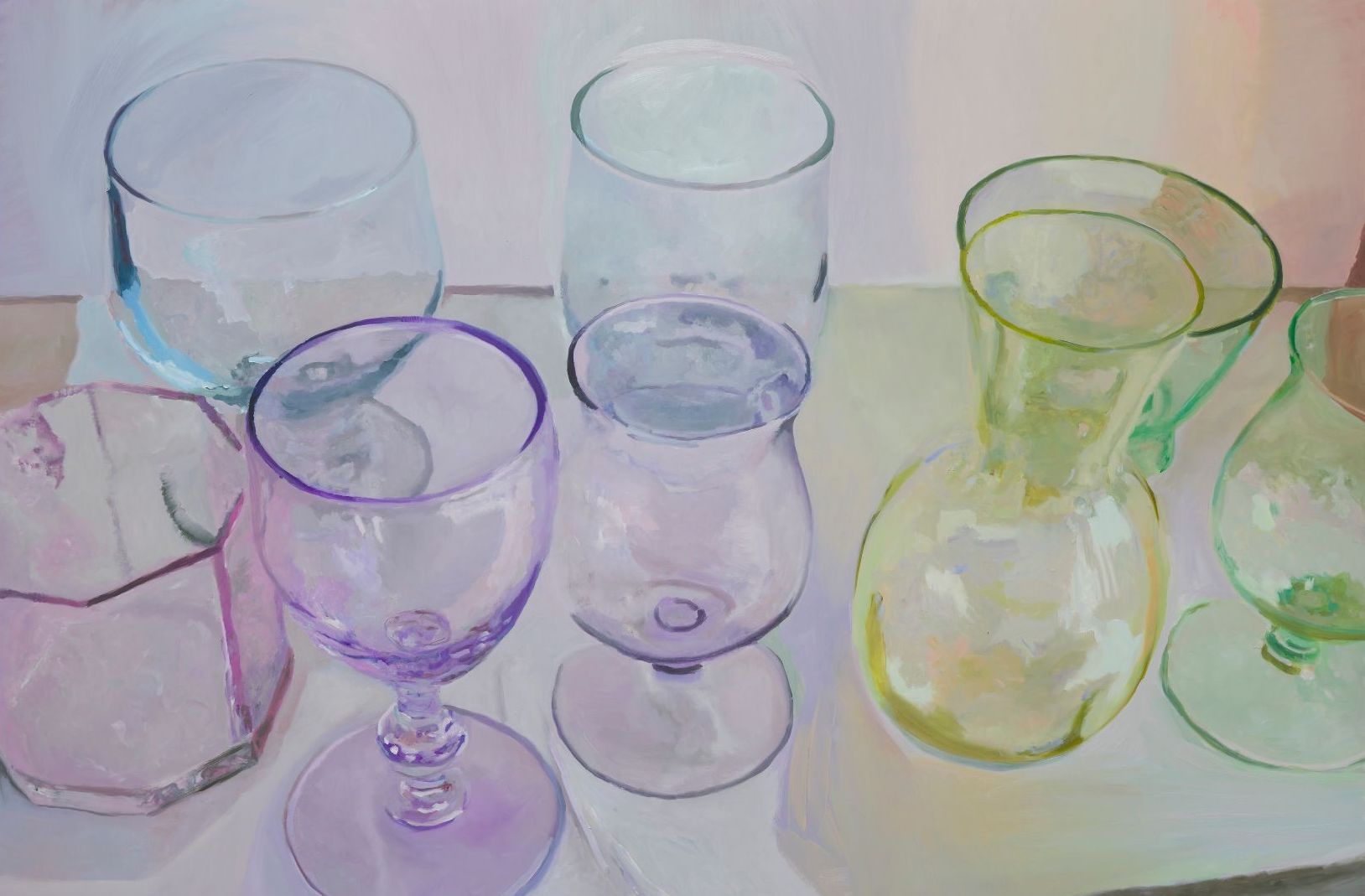May 02, 2023
The painted language of things: an interview with artist Nick Farhi
Article by Mollie Barnes
4 min. read

“In a circle of friends, he wonders “what their glasses would think of them.””
Nick Farhi makes small objects, extraordinary. Cookware, shiny toasters, bottles, ceramic figurines, crystal shapes and glasses – each painted into a painterly, visual adventure from the everyday.
Farhi arrives at the painting studio at 9am – sharp. Often working long hours throughout the day on his fascinating still life scenes. His inspirations come from ideas of society, as well as a desire to make strong, visual metaphors that explore our shared existence.
Farhi’s artistic journey began when “touching sculptures as a child in the Guggenheim!”. Noting how he would not do this now, he tells me that touching the works so intimately gave an unmatched sense of awe, “that art is enormous, captivating and rare”. Working across a variety of media, including oil, utilizing his iPhone, with stencils, pastels and spray paint, I was particularly fascinated by his works on metal. Selected as a surface after seeing the works of some of his heroes, namely Dike Blair and Marilyn Minter who painted on a similar canvas, he enjoyed experimenting with the substrate when working between LA and Mexico. The surface is unmatched in its flatness, perfect for rendering his accurate visions. Indeed, visiting and meeting other artists is a key and enjoyable part of his life, saying how he believes “it important to be outside of the studio weekly”.
Works are a “life long relationship” – one of immense care, research, poeticizing, reflecting, envisioning and perfecting. Farhi paints to expert realism, expanding these – often overlooked – objects into a large scale. They become unmissable, and imbued with context; intricate brush strokes render light from challenging materials and forms.
One such challenge is his frequent representation of glass: fish tanks, bowls, ornaments, glasses, bottles, jugs… Painstakingly created, glass here references a warning to viewers on how fragile a Western, consumerist society is. He describes how, in one work, “earthy green glass represented our environmental detriments” while depicted “glass slippers nodded to the 1,000 year old fable of Cinderella – an oration which can be traced across Africa, Asia, Europe and South America. Where in which the protagonist is thwarted with the expectation that they need to love a luxury found object (the slipper) in order to ascend and find inner happiness. This is much like the way corporations today tell us what is needed objectively to join what they refer to as the ‘heights of society’.”
A focus on mundane objects further explores the artist’s insight into a capitalistic, consumerist present. We have become “a society so entrenched with instant gratification, driven by late capitalism, and to what end? I am not painting paintings for the instant gratification of someone enjoying them, yet to produce a latent effect.” Rather than addressing our daily life, he describes his works rather as “advertisements for the objects of daily life.” They have references to found imagery, often from the internet, travel, sometimes from memories of his Grandmother’s home, books, films, stories from friends. He gives agency, life and stories to these objects. They are not merely background props of utensils, but rather, stars of their own show. Inspiration is drawn from everywhere. Farhi has referenced how the artist Gaughin was constantly observing that and those around him. Upon seeing people share a drink, he wondered “what their glasses would think of them.” A particular period of his practice saw his ideas draw from accidental photographs, meaning postings of people’s possessions and “junk” on sites like Craigslist and eBay. These became references in his works. This online method of influence shopping was only exacerbated during the pandemic. He describes how many of these objects were somewhat universal, representing “archetypes that reflected society and its function within our consciousness.”
Works are not merely representational – they each share an entrenched story and mystery. Titles add another layer – who is moving? Where are they going? What are they saying to one another?
While Farhi is currently working on new works that will be exhibited in New York, he is also pursuing “ideas that stop [him] in his own tracks.” With a laptop full of writing and dream projects, there is no telling what he will continue to achieve. For the time being, we look forward to discovering his new paintings at Future Fair with newcube in May.
Visit newcube at Future Fair!
BOOTH R5
Chelsea Industrial
535 W 28th ST
New York, NY 10001
May 10-13, 2023

Discover more
artist
Nick Farhi
New York, NY